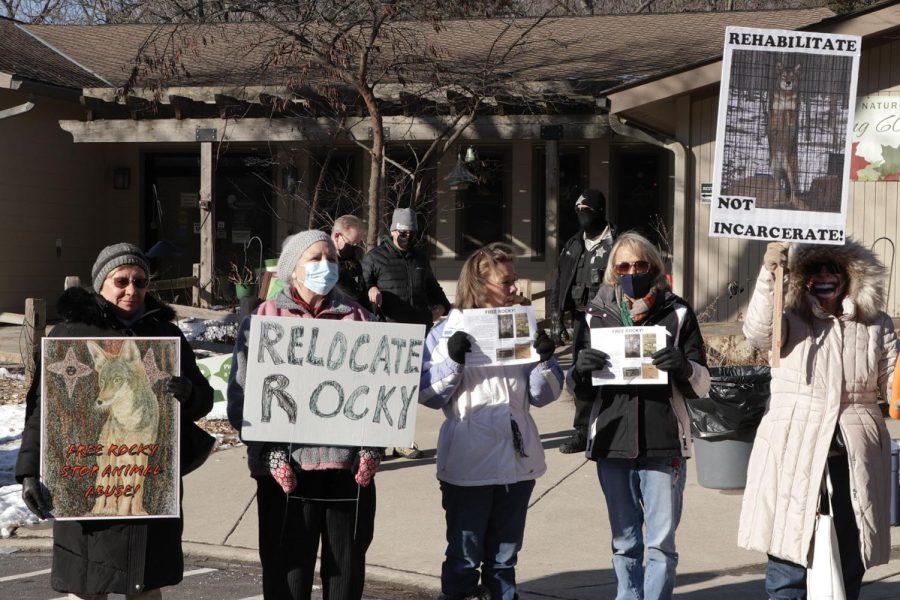Captive coyote sparks activism
Northbrook resident fights for more natural environment for coyote
A coyote was pacing in a cage at the River Trail Nature Center in Northbrook the first time Northbrook resident Nicole Milan saw him at the end of last October. There was nowhere for the coyote to run, and he was doing tricks in order to receive his food. With children screaming and traffic from the nearby parking lot, Milan was disturbed and went to learn more about the coyote’s background.
Carl Vogel, director of communications for the Forest Preserves of Cook County, said in a phone interview that the coyote was mistaken for a puppy in Tennessee and taken to an animal shelter, but when employees at the shelter discovered he was a coyote, he was sent to an animal rehabilitator who determined the coyote had no fear of humans.
He was moved to River Trail Nature Center in 2018, where he currently lives in a 266-square-foot cage, Vogel said.
As long as the coyote stays at the River Trail Nature Center, making sure he is doing well and being taken care of is important, Vogel said.
According to Milan, she offered to donate and fundraise at the beginning of November to enlarge the coyote’s cage, but Jacqui Ulrich, director at the Forest Preserves of Cook County, declined her offer.
After sending an email to Ulrich requesting information about Milan’s declined offer, Torch received a response from Vogel stating in part, “The public contacts us with many ideas for improving our public spaces and recreational amenities. Some people offer to raise funds with the idea it will be at no cost to the Forest Preserves, which is a generous and appreciated offer. There are other considerations, though (including the expenses of staff time, planning, and other resources needed for a project). Each idea needs to be considered against our current needs, resources, and our commitments to issues such as equity, sustainability and protecting the natural and cultural resources in our care.
“This type of change will be considered as part of our review of our animal ambassador program, based [on] an overview of the latest academic research, the state of the discussion around animals in captivity, input from other third-party experts, best practices locally and nationally, and benchmarking against other, similar programs,” Vogel stated in the email.
According to Milan, she is now asking for the coyote to be released to The Wild Animal Sanctuary in Colorado and is gathering signatures on a petition.
Liz Cabrera Holtz, wildlife campaign manager for World Animal Protection, said in a phone interview that wild animals cannot thrive fully in captivity.
It is not possible to replicate the space and freedom they would experience in the wild, and wildlife animal captivity will always result in some degree of physical or psychological suffering, Cabrera Holtz said.
Individuals can help animals by avoiding places that allow interactions with wild animals and wildlife-exploitative venues, getting active in local legislation, educating oneself, and adopting a plant-based diet or increasing plant-based foods in one’s diet, Cabrera Holtz said.
“Animal rights fits into this larger ecosystem of all this work being done to create a more equitable, just and caring world,” Cabrera Holtz said.
According to Milan, she had no activist experience before seeing the coyote.
“[Do] you ever go through life and just something really gets your attention and you can’t stop thinking about it?” said Milan. “It just speaks to you intuitively?
“I couldn’t just leave it alone,” Milan said.


